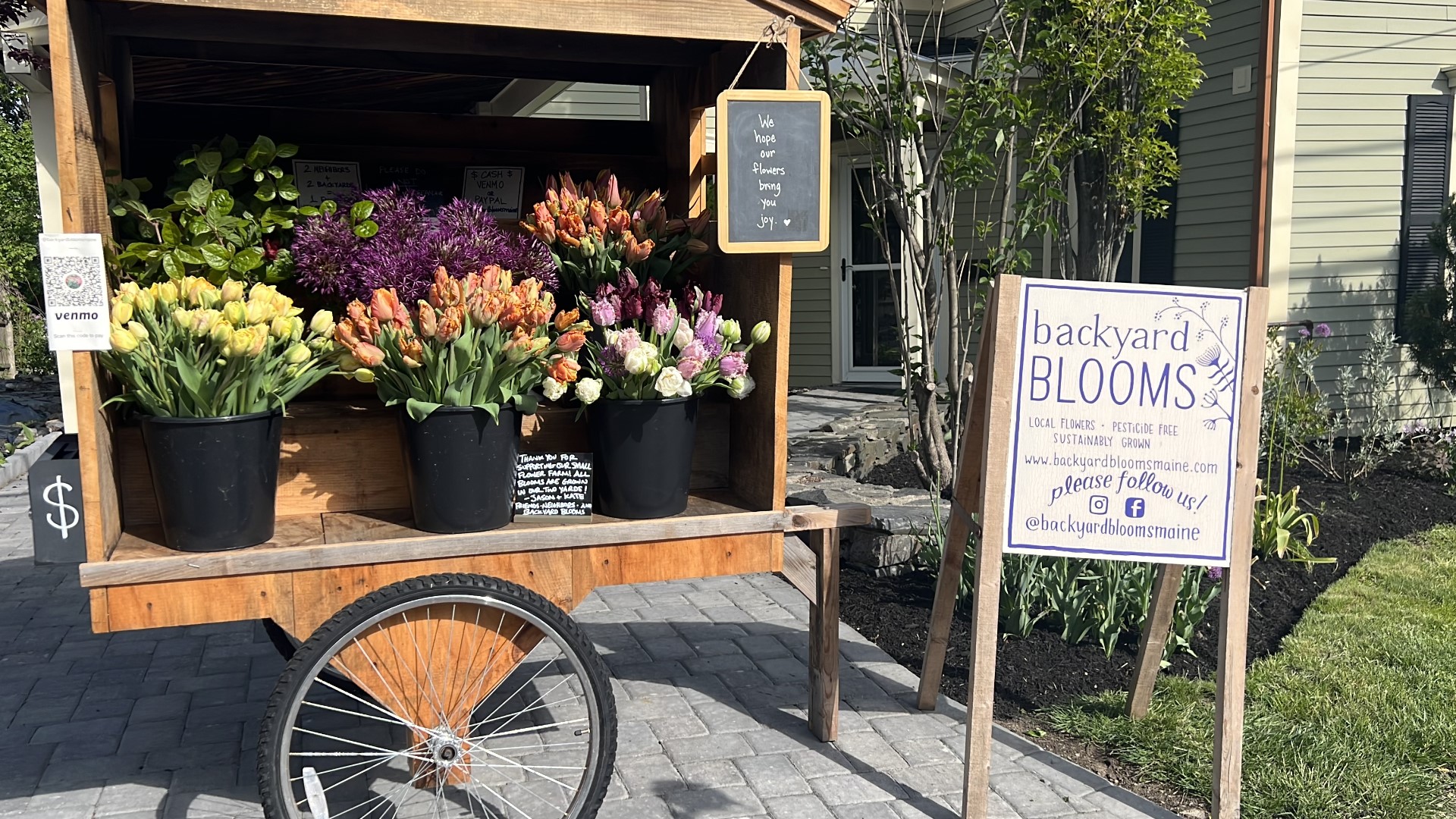PORTLAND, Maine — Hidden in the middle of Portland is a micro flower farm, where the business is blooming.
From their quaint little cart, Jason Aucoin and Kate Hanavan Ross sell gorgeous flowers that they have grown in their two connected backyards. Hence the business name: Backyard Blooms.
“We grow on about a quarter of an acre of land. Urban land,” Jason said.
“Yeah, and we’re doing real farming practices like on this urban land," Kate added. "So, it’s a neighborhood flower farm, but we’re like a little, little farm.”
The business partners have known each other since high school and didn’t reconnect until Kate moved to Portland. Funnily, Jason didn’t know Kate was next door until she introduced herself to her new neighbor.
“A few years later we said, 'Let’s do something with all this land, because there’s a surprising amount of it,'” Kate stated.
The two gardeners use raised beds and container planters to increase space. They also use succession planting to maximize product output.
“We’re not just planting one crop, and that’s it for the season. We’ll plant an early crop, and once it's done flowering, we’ll pull it out. [Then] we’ll plant another one,” Kate explained as she pointed to a field where tulips had grown but now annual seedlings were planted.
“We’ve amended the soil with 2 inches of organic compost and some organic fertilizer. And we’re just starting to put in our annual cut-flower crops," Jason added.
These are some of the annuals that Backyard Blooms grows:

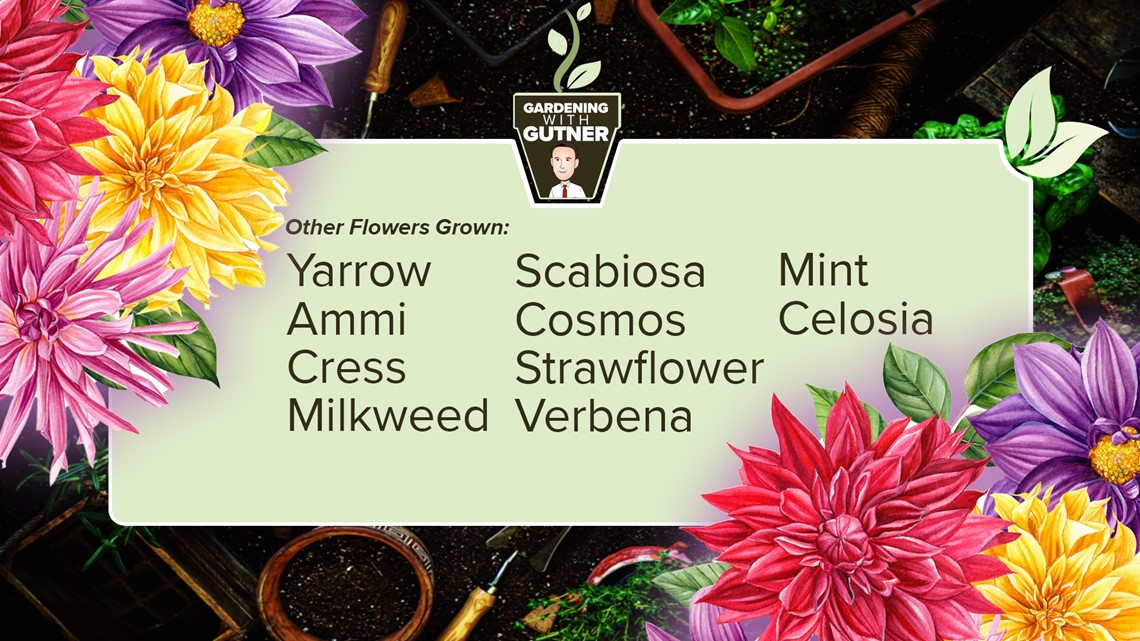
One of the favorite annuals for Kate and Jason to grow is dahlias. Dahlias grow from tubers that have to be planted in the spring to get flowers in the late summer.
“They don’t look like much, but they’re pretty powerful little guys, and they're going to grow beautiful dahlia plants,” Kate as she held two tubers in her hands.
Kate went on to explain that the important thing with healthy tubers is that they have healthy growth points otherwise known as eyes. Then to plant the tubers, dig into soil that has been amended with compost and fertilizer about 4 inches. Place the tuber in the hole sideways. Do not plant the tuber vertically. Cover the tuber with the soil and gently pat down.

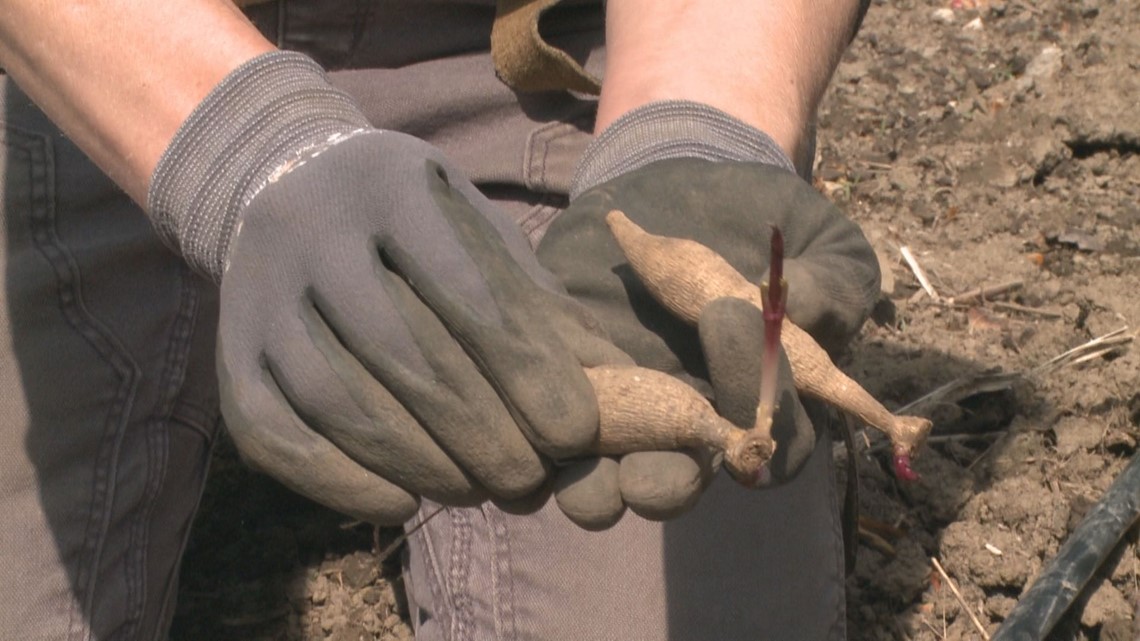
“And leave it be. You actually don’t want to even water the tubers,” Kate said. “You want to wait for the initial sprouts to come, to surface and come out of the dirt.”
Dahlias grow to be very tall, and the weight of the blooms can make them topple over. That’s why it’s important to stake every plant. Jason recommends putting in your stake first and then planting the tuber in front of it, so you don’t risk actually hurting your tuber with the stake.

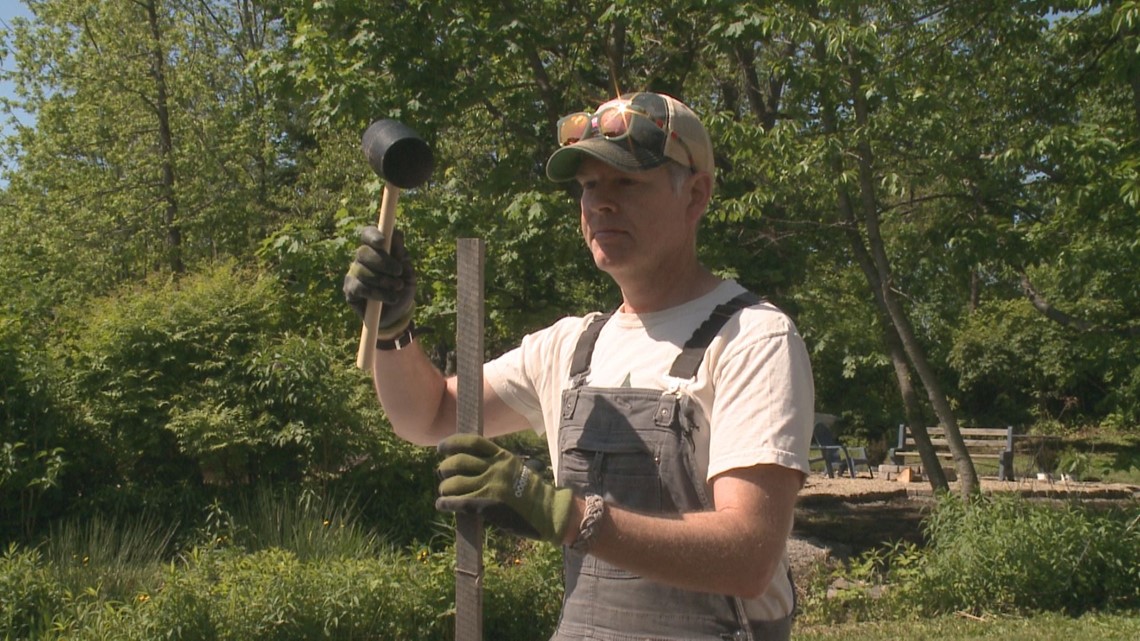
Kate explained that they plant their tubers in the middle of May, but you can plant all the way to the end of June for flowers in the late summer. She instructed to pinch the plants at the center of the stem above the third leaf set once the plants reach about eight inches. Once you have blooms, the more you cut them the better.
“You just want to cut those blooms. The more you cut into a dahlia, the more it will flower,” Kate explained.

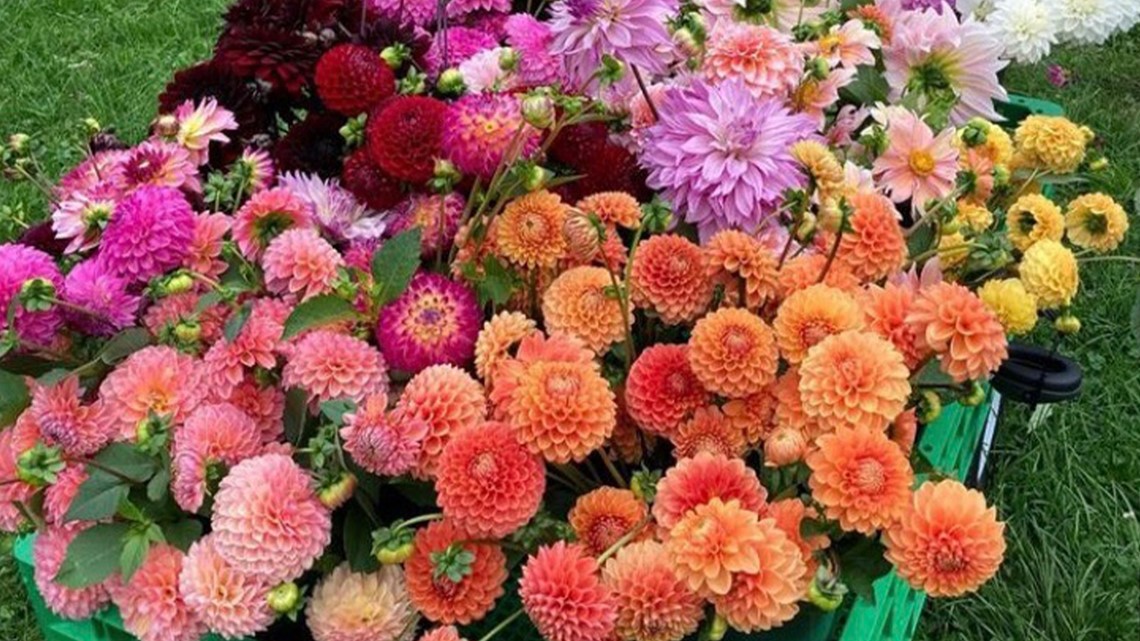
For more information on dahlia tubers and Backyard Farms click HERE.
To see all the Gardening with Gutner segments click HERE.

